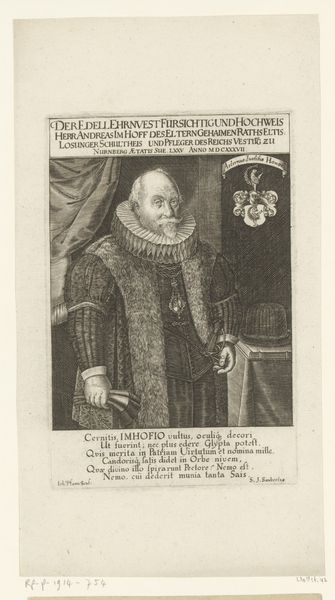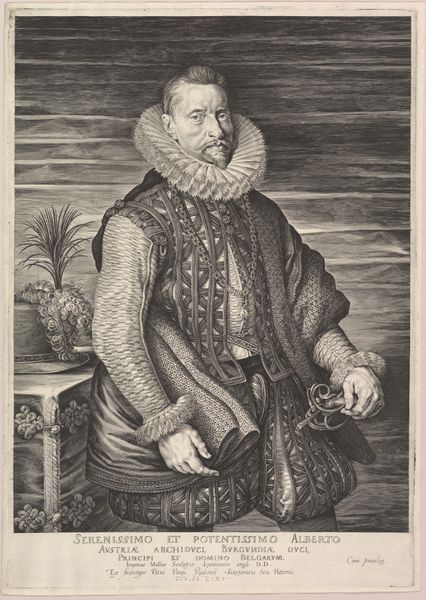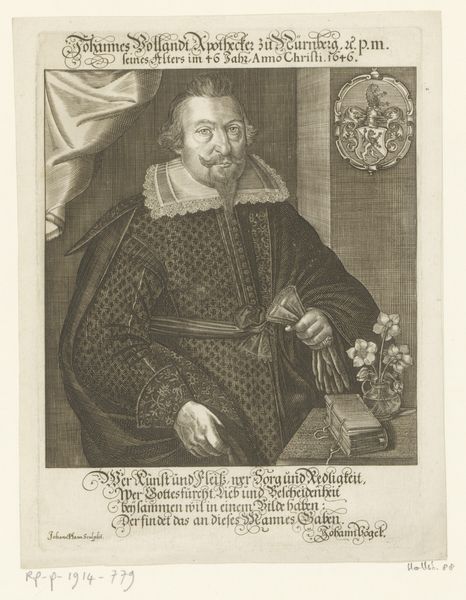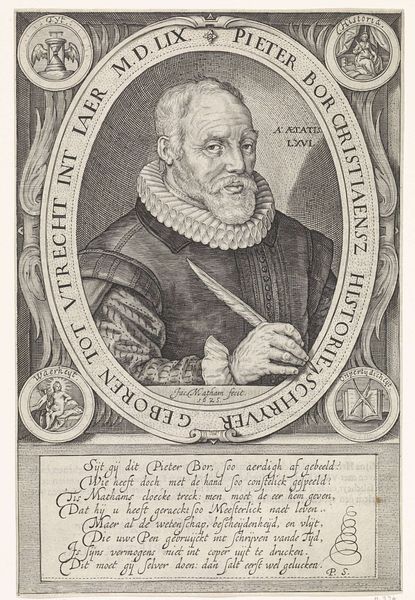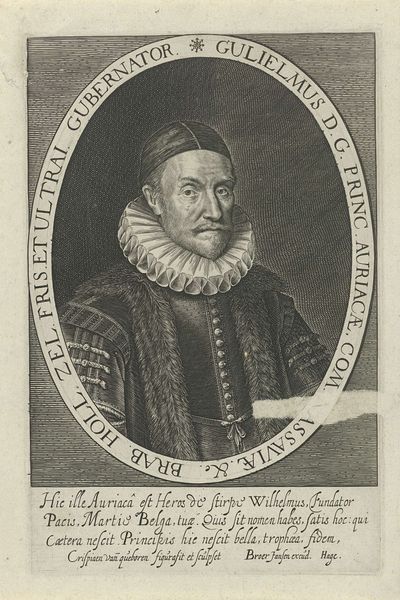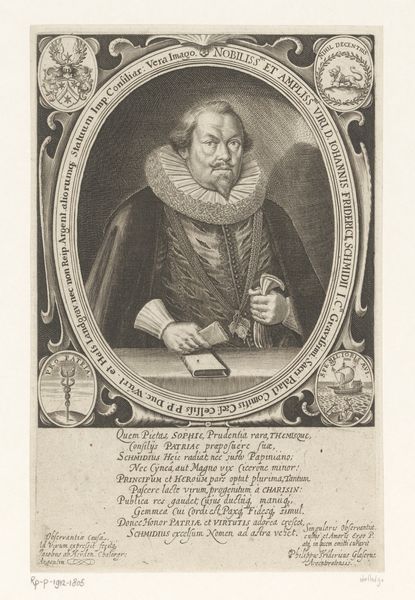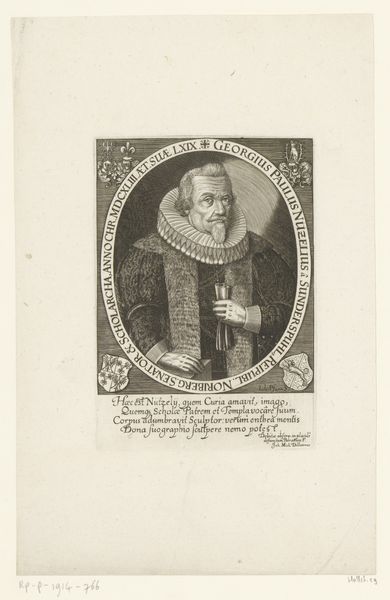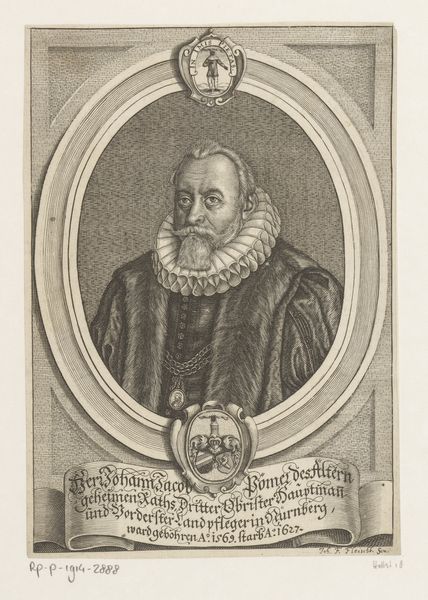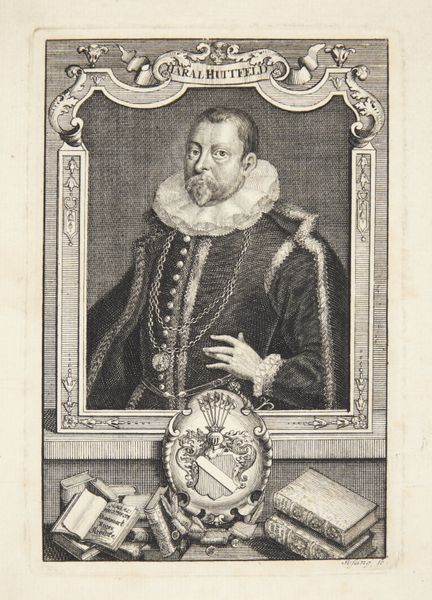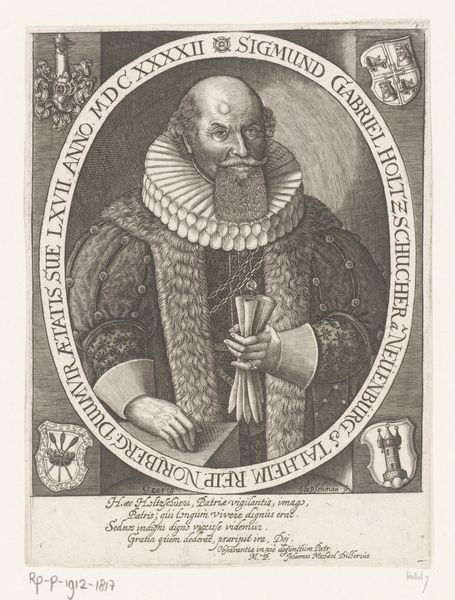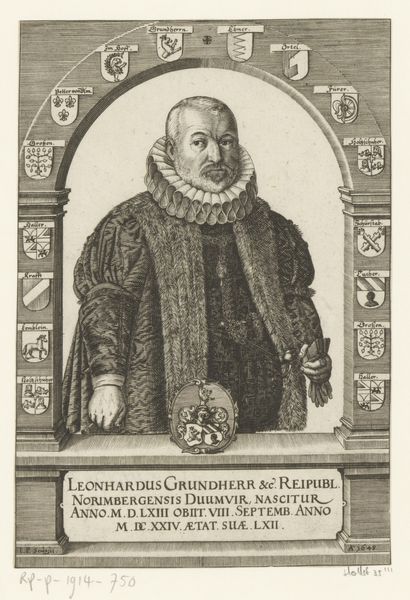
print, engraving
#
portrait
#
baroque
# print
#
history-painting
#
engraving
Dimensions: height 190 mm, width 130 mm
Copyright: Rijks Museum: Open Domain
Johann Pfann made this portrait in 1648, using engraving – a printmaking process that involves cutting lines into a metal plate. The ink settles into these grooves, and when printed, the image appears. Notice how the crisp, precise lines define Ulric Grundherr’s features and clothing. The varying thickness and density of these lines create shading and texture, giving depth to the image. The technique demanded incredible skill and time. Each line represents a deliberate decision, reflecting the engraver’s mastery over the material. Consider the social context: printmaking allowed for wider distribution of images. Portraits like this would have circulated among the elite, reinforcing social status and power. The labor-intensive process speaks to the value placed on craftsmanship and the representation of prominent individuals in 17th-century society. Ultimately, understanding the materials, process, and context allows us to fully appreciate the social significance of this portrait.
Comments
No comments
Be the first to comment and join the conversation on the ultimate creative platform.

